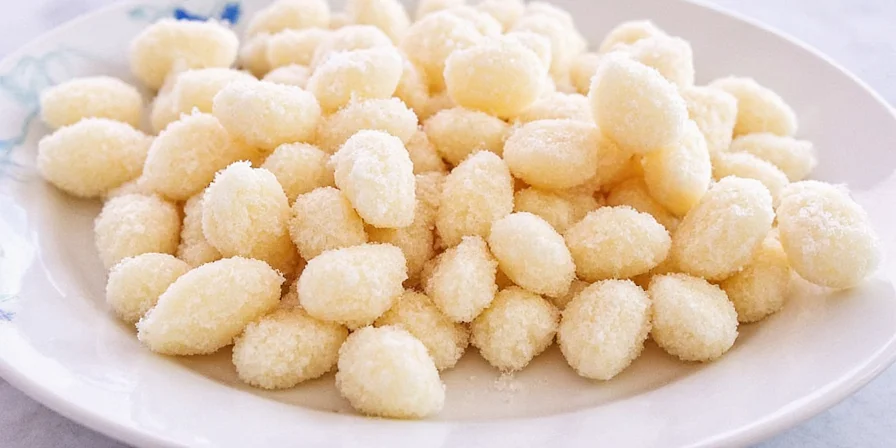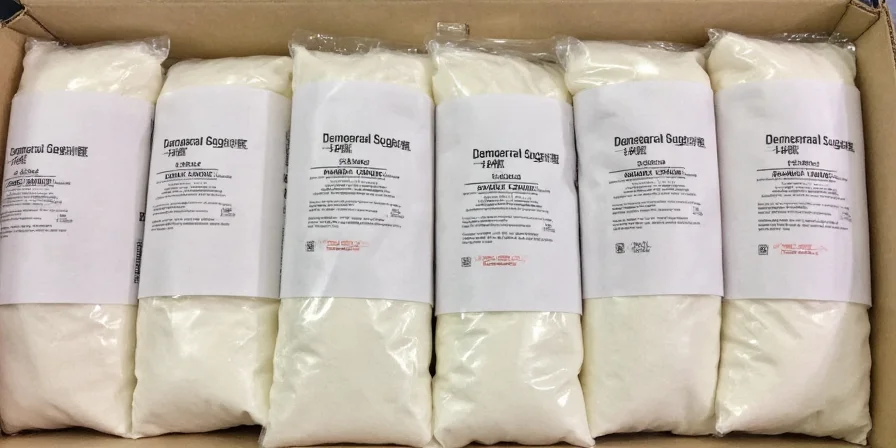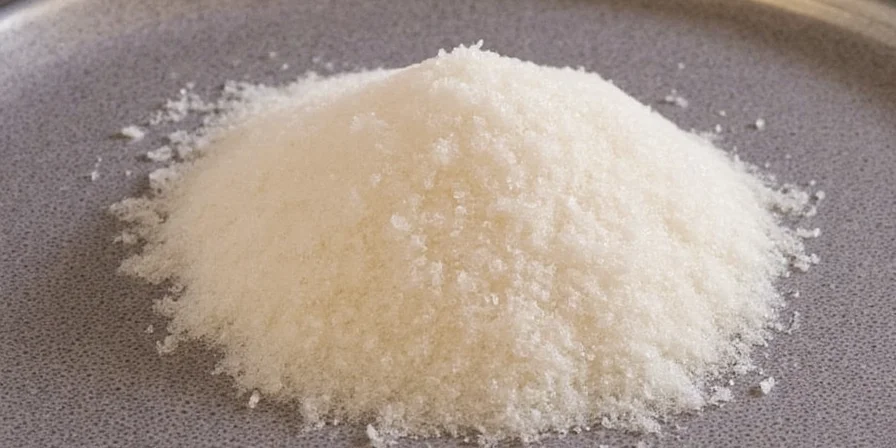Demerara Sugar: The Crunchy Golden Gem of the Spice Rack
If you’ve ever sipped a fancy latte at a boutique café and thought, “Man, that crusty topping tastes like sunshine in granular form…” — congrats! You were tasting the magic of Demerara sugar. But what exactly is Demerara sugar? And why does it sound like a pirate’s treasure but taste like a velvet dream?
In this blog post, we’re peeling back the golden layers of this sweet superstar. Whether you're a professional chef, an enthusiastic home baker, or just someone who appreciates a good sprinkle of sparkle on your coffee, this deep dive will make you crave some Demerara action.
What Is Demerara Sugar?
Demerara sugar is a type of raw cane sugar known for its large, crunchy golden crystals and subtle molasses flavor. It gets its name from the Demerara River in Guyana, where it was originally produced. Today, it's often made in other parts of the Caribbean and South America, maintaining its rustic charm and unrefined appeal.
Unlike white table sugar, which is heavily processed, Demerara sugar undergoes minimal refining. This gives it a slight caramel-like flavor and a natural amber hue. It's also rich in minerals like calcium, potassium, and magnesium — so if you’re going to indulge in sweetness, this might be the slightly healthier (but still indulgent) option.

Photo: Those chunky, golden crystals? That's the signature look of Demerara sugar.
How Does It Compare to Other Sugars?
Let’s put Demerara in perspective. Here's how it stacks up against other popular sweeteners:
| Sugar Type | Texture | Flavor Profile | Best For |
|---|---|---|---|
| Demerara | Rough, crunchy crystals | Mild molasses, earthy sweetness | Coffee toppings, baking crusts, sauces |
| Turbinado | Similar texture, slightly finer | Bolder molasses notes | Cocktail rims, baked goods |
| White Granulated | Fine, smooth grains | Pure, neutral sweetness | Most baking, cooking |
| Brown Sugar | Damp, soft clumps | Strong molasses flavor | Chewy cookies, barbecue sauces |

Photo: A side-by-side view of different sugars — notice how Demerara stands out!
Why Chefs Love Demerara Sugar
Professional chefs adore Demerara for more than just its looks — though let’s be real, those shiny golden crystals are like edible bling. Here are a few reasons why it’s a staple in the spice rack of many seasoned kitchen warriors:
- Textural contrast: Sprinkle it on top of muffins, crumbles, or crème brûlée for a satisfying crunch.
- Subtle flavor boost: Adds a hint of caramel and earthiness without overpowering other ingredients.
- Easy caramelization: Melts beautifully in hot drinks or under a blowtorch for finishing dishes.
- Aesthetic appeal: Elevates presentation instantly — think fancy coffee toppings, cocktail rims, or glazes.

Photo: Chef using Demerara sugar to finish off a gourmet treat.
Top 5 Tips for Using Demerara Sugar Like a Pro
Ready to add a little glitter to your life? Here are five sweet strategies to get the most out of your Demerara stash:
- Sprinkle It on Top: Use it as a crunchy topping for scones, biscuits, cakes, and pies. Just press it gently onto the dough before baking.
- Mix Into Oatmeal: Add a spoonful to your morning oats for a caramel kick and a bit of crunch.
- Stir Into Hot Drinks: Stir it into coffee, tea, or chai for a richer, smoother sweetness.
- Use It in Marinades: Combine with soy sauce, garlic, and spices for a sweet-and-umami-rich marinade for grilled meats or tofu.
- Melt It for Glazes: Melt it with butter and a splash of cream to create a silky glaze for roasted vegetables or ham.

Photo: Freshly baked buns topped with Demerara sugar — golden and gorgeous.
Is Demerara Sugar Healthy?
While Demerara sugar is less refined and contains trace amounts of minerals, it’s still sugar — meaning moderation is key. Let’s not start sprinkling it on everything like it’s confetti at a parade. That said, compared to highly processed white sugar, Demerara does offer a more natural alternative with a deeper flavor profile and a tiny nutritional edge.
If you’re watching your blood sugar levels, keep in mind that its glycemic index isn’t significantly lower than regular sugar. So while it’s a better choice in terms of flavor and texture, don’t expect it to be a health miracle — it’s more like a “healthy-ish” upgrade.
Where to Buy Demerara Sugar
You can find Demerara sugar in most well-stocked grocery stores, specialty food shops, and online retailers. Look for brands like Billington’s, Florida Crystals, or Wholesome! Organic Demerara. If you want to go local, check out international markets that carry Caribbean or Latin American products — they often have authentic varieties.

Photo: Different brands of Demerara sugar available on store shelves.
Conclusion: Demerara Sugar — The Gilded Star of Your Spice Rack
So there you have it — the lowdown on Demerara sugar, the crunchy, golden jewel of the sugar family. From its Caribbean roots to its modern-day culinary uses, this sweet sensation brings flavor, texture, and a touch of elegance to your kitchen arsenal.
Whether you’re dusting it on desserts, stirring it into your latte, or jazzing up your next barbecue glaze, Demerara adds a layer of sophistication that other sugars can only dream of. It’s versatile, flavorful, and totally Instagram-worthy. What more could you ask for from a crystal?
Now go forth and sprinkle that golden goodness wherever your culinary heart desires. Your taste buds — and your inner pastry chef — will thank you.
Remember the Key Takeaways:
- Demerara sugar is minimally processed cane sugar with large, crunchy crystals.
- It has a mild molasses flavor and a beautiful amber color.
- Great for adding texture and flavor to baked goods, drinks, marinades, and glazes.
- It’s a step above white sugar in terms of nutrition, but still should be used in moderation.
- Widely available and worth every penny for the right application.
Happy spicing — and may your days be forever golden!











 浙公网安备
33010002000092号
浙公网安备
33010002000092号 浙B2-20120091-4
浙B2-20120091-4